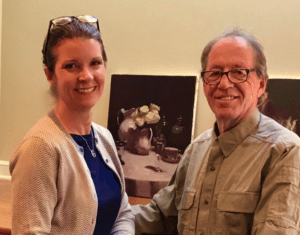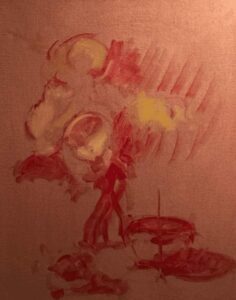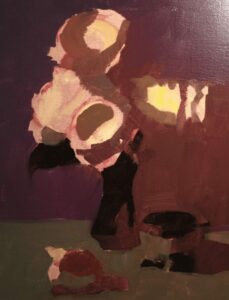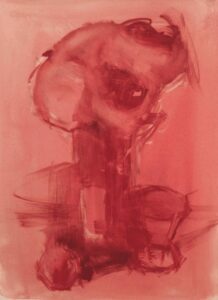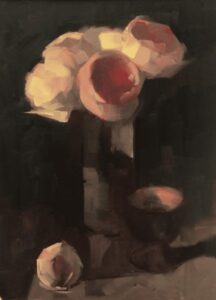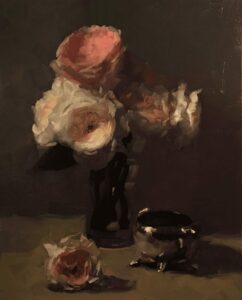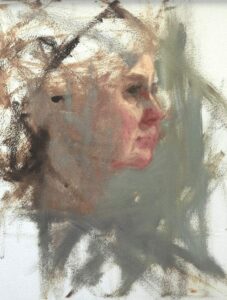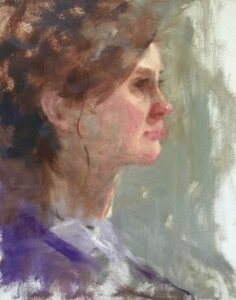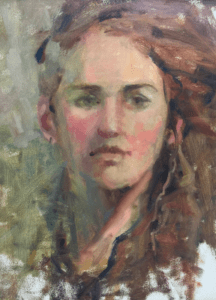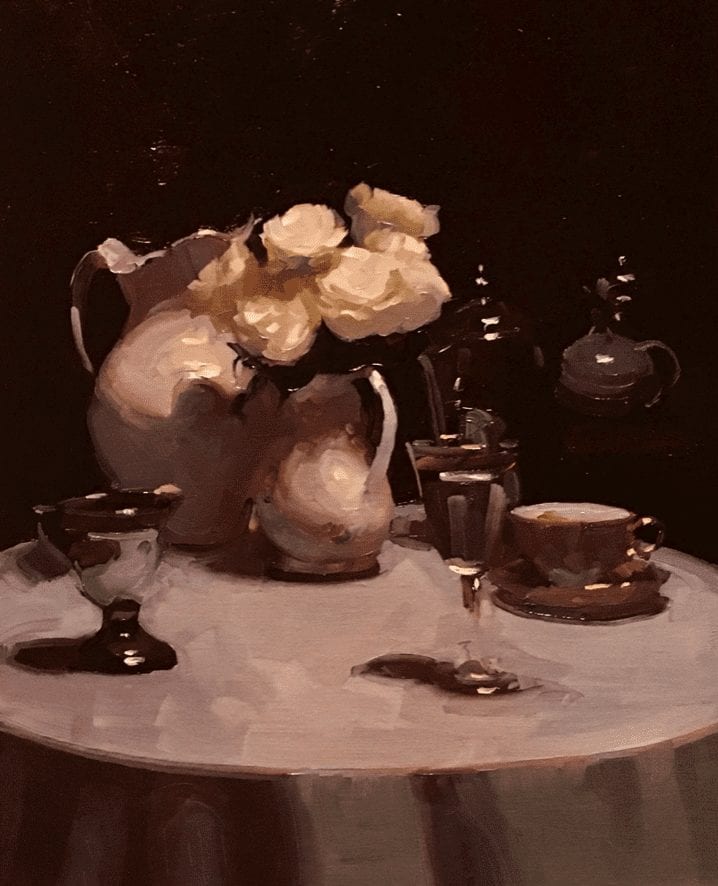
Collection of Ann Feldman
A prolific painter and inspiring teacher, Dennis Perrin is a transplanted southerner living and working in an idyllic setting in Maine with his wife Aimee. Dennis has been called an American Impressionist in the Boston School tradition, and readily shares his inspiration and techniques with students in workshops, retreats, and through his online courses. More about his art and his instruction can be found at www.theperrinmethod.com.
MY GOAL WITH DENNIS:
As I drive to Carmel, Indiana for a workshop with Dennis Perrin, I think about what I’d like to get out of the next four days with him. His paintings always strike me as reminiscent of a Sargent or a Sorrolla with his solidity of shapes, strength of light and shadow, and a wonderful sense of timelessness. There is a confidence and painterliness in his brushstrokes that I would love to witness in person and bring home to my own paintings.
DAY 1: INTRODUCTION TO THE PERRIN APPROACH
After introductions and settling in, we start out with a demonstration by Dennis of a simple white rose in a vase. As he paints, he introduces us to his approach to painting. I’ve paraphrased it in my own words here:
Begin with a mental plan of the general feeling and intent of your painting. Identify the essential elements of your subject and block in a solid underlying composition of abstract shapes. Unity and simplicity in value massing in this step will result in a powerful statement in the finished painting.
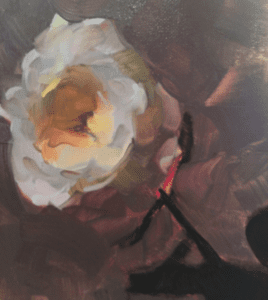
After his demonstration, it was our turn to try our hand at painting a white rose.
My Takeaway:
Painting white roses has always been a challenge for me, but something clicked with me that day:
If you have a solid value guide to begin with, the light, shadow and subtle variances in a white flower become readily identifiable. With this underlying map, I don’t get so lost in all the frilly details of the flower. I’m starting to feel hope, but my efforts at painting today fall short, and I wipe everything off. Tomorrow is a new day!
DAY 2: PAINTING A STILL LIFE (THE BLOCK IN)
Today, Dennis set up a larger still life to show us how he begins the initial block in of his abstract shapes and value masses.
Identify abstract shapes in warm reddish undertones. Find the darkest and lightest values.
Beginning with the darkest values, develop the value areas of the painting. The solidity of the forms and the areas of light and shadow are obvious now. This will guide the final stages of the painting tomorrow.
My Takeaway:
This initial stage is the most important in the successful development of the painting. Without a strong foundation, no amount of fancy brushwork will make the painting hold together and make a powerful statement after completion. I believe that this quality of strength and solidity are hallmarks of Dennis’ painting style, and I will make an effort to bring these elements into my paintings at home.
DAY 3: DETAIL AND REFINEMENT
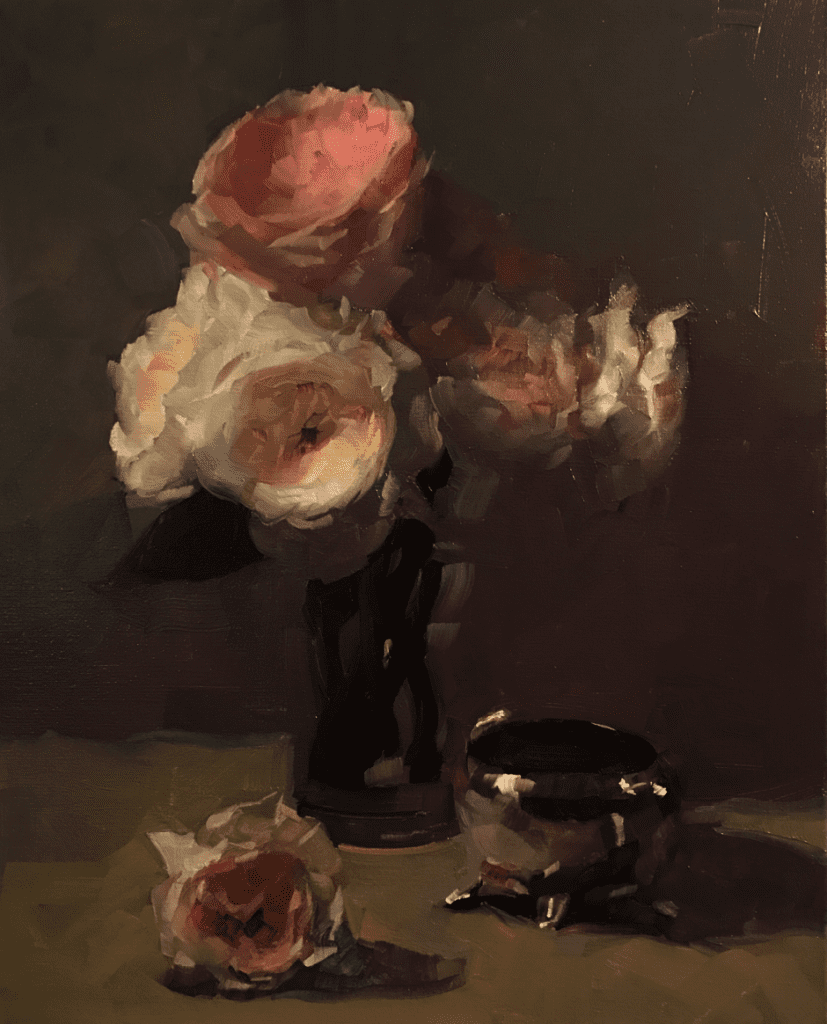
Photo Courtesy of Sherri Burritt
On the third morning, we watch as Dennis develops the painting into an astonishingly beautiful work of art. He concentrated on one value area at a time, beginning with the background in order to warm up a bit before developing the more detailed areas.
He emphasized that when the details are added in each area, the underlying value is adhered to; that is, dark values remain dark values, light values remain light, and everything in between stays in their value. In this way, the form, light, and shadow of the initial underpainting will remain intact. If you “jump the value lines”, the solidity of the painting will weaken.
I Try My Hand:
Here is the development of my painting in the workshop using Dennis’ approach. I could see early on that the painting had a good sense of form, light, and shadow. I tried not to disturb the value patterns of my underpainting when I developed the details in the final steps.
Photo Courtesy of Sherri Burritt
DAY 4: EXERCISES TO GET OUT OF OUR COMFORT ZONES
On our last day together, Dennis suggested that we set up a small still life and paint with the largest flat brushes we can. He even suggested that we take the exercise a step further, taking turns painting on each other’s canvases! We set timers and painted in 30 minute increments, switching places several times before our time was up.
You could hear a pin drop as we concentrated on our assignment. All of us had very low expectations for our little paintings, but each of us was surprised at what we were able to accomplish.
My Takeaway:
A large brush can be surprisingly agile, and encourages us to see generalities rather than focusing on the details of the painting. Painting as a team was very eye opening— I saw aspects of the painting through someone else’s point of view that I missed at first, and learned from that.
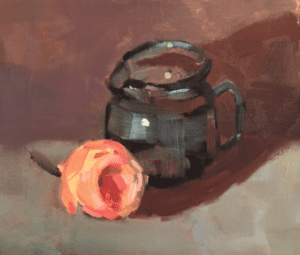
Ann Feldman and Fran Hollander
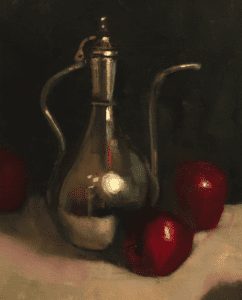
After the glow of an exciting workshop has begun to fade, I try to retain what I’ve learned and translate it into my work at home. I’m picking up larger flat brushes now, and sticking with them as long as I can. I focus on the “big picture” of my painting as I develop large forms into smaller details, and pay special attention to the abstract shapes underlying my paintings which will give the final piece solidity.
Most importantly, I’m trying to take my time to build up a solid foundation underneath my paintings, and not get distracted by the little details which are eye catching and fun, but not important in the overall composition of the painting. I’m trying to hold off on putting in the details until the final 5% of my painting time. And I’m enjoying the result of all this restraint!
Thank you, Dennis Perrin, for a very eye opening workshop, and an experience that will stay with me every time I pick up a brush in the future!
